SHMT-M1 - Vietnam’s Dual-Environment Assault Rifle

Naval warfare has always demanded tools that are as specialized as the environment in which they are used. Unlike land or air combat, operations beneath the surface place unique challenges on both the operator and the weapon. Naval divers, tasked with missions ranging from sabotage and reconnaissance beneath the waves, require arms designed to function reliably in conditions that would cripple conventional firearms. Saltwater corrosion, the drag of dense liquid, and the need for lethality at extremely short ranges all demand engineering solutions far outside the norm.
As a result, a niche but vital category of specialized weapons has emerged that is purpose-built for combat swimmers who must move seamlessly between the submerged and surface environment. These weapons, often overlooked in mainstream discussions of military technology, represent some of the most ingenious adaptations in modern arms development, bridging the gap for the frogman between below the waves and above.
Unveiled at Vietnam Defence Expo 2024, the SHMT-M1 is a unique rifle filling a niche role. SHMT stands for Súng Hai Môi Trường, which translates to “dual-environment rifle.” The name reflects the weapon’s defining characteristic: the ability to function above water and beneath the waves. While amphibious firearms are not entirely new, few countries have attempted to design one or adapt an existing weapon for this role.
The Gun
The SHMT-M1 uses Vietnam’s licensed production of the Galil ACE rifle as its base, a modernized descendant of the Israeli Galil, which itself drew heavily from the Kalashnikov lineage. But Vietnam’s engineers went further, modifying the design for a unique amphibious role that caters specifically to the country’s maritime geography and its armed forces’ operational needs.
At first glance, the SHMT-M1 looks like a 5.56 Galil. Yet close inspection reveals subtle changes. The receiver, receiver cover, and bolt carrier have been re-engineered with a series of holes. These serve a critical purpose: when the weapon is submerged and fired, water trapped within the receiver must quickly escape to prevent hydraulic lock and ensure the bolt carrier cycles smoothly. Without this feature, an underwater rifle would fail after the first shot. The SHMT-M1’s modified cover allows water to drain rapidly, maintaining reliability whether fired below or above the surface.
Another design shift, being chambered in 5.56 NATO and using an AR-15 style magazine release. This may have been done for weight, as AR-15 aluminum magazines are considerably lighter than the original steel 5.56 Galil magazines.
Above water, the SHMT-M1 performs much like a traditional weapon, making it comparable to other modern assault rifles, ensuring it does not sacrifice land combat performance for its amphibious specialty.
The real innovation lies in its underwater capability. Standard bullets lose speed and accuracy almost immediately when fired into water due to the density of the medium. The SHMT-M1 reportedly uses a specialized cartridge designed for improved underwater ballistics to counteract this. While details remain classified or undisclosed, such cartridges often feature elongated projectiles shaped to reduce drag, allowing them to maintain stability over short but usable ranges underwater. The effective underwater ranges of 15 to 25 meters are more than enough for divers conducting operations or defending against threats in littoral environments where visibility may not be at its best.
To further support this capability, the SHMT-M1 incorporates an adapted gas system with a regulator designed to function when water is in the chamber and gas tube. This prevents the weapon from over-pressurizing or failing to cycle when transitioning between environments and balancing gas operation in two radically different mediums, like the Russian ADS.
The SHMT-M1 is inspired by earlier Russian efforts, especially the ADS dual-environment assault rifle developed by KBP Instrument Design Bureau. The ADS was Russia’s solution to replacing its older APS underwater rifle, which, while effective underwater, was nearly useless on land. Russian designers created a versatile amphibious rifle by chambering the ADS in 5.45x39mm and allowing it to fire specialized underwater ammunition and standard service rounds. The Vietnamese SHMT-M1 follows this design philosophy, blending normal assault rifle performance with specialized adaptations for submerged operations. While Vietnam’s engineers used the Galil ACE as a base instead of the Kalashnikov-derived ADS bullpup, the conceptual parallels are clear. Both weapons aim to eliminate the need for combat divers to carry two separate firearms by giving them one rifle for both worlds.
Operationally, the SHMT-M1 is being tested by Vietnam’s naval special forces and combat diving units. The nation’s long coastline, riverine networks, and contested maritime zones in the South China Sea make amphibious weapons particularly relevant. For commandos tasked with infiltrating from the sea, having a rifle that seamlessly transitions from underwater swimming to beach assault reduces the need for multiple specialized weapons. Instead of carrying a dedicated underwater firearm like the Russian APS and then switching to a conventional rifle on land, Vietnamese divers can rely on one gun throughout the mission.
The strategic implications are notable. Vietnam has historically relied on Soviet and later Russian small arms, but the SHMT-M1 represents a more ambitious leap. It is not just a copy of an existing foreign design but a localized adaptation addressing specific tactical needs or ambitions.
However, challenges remain. Amphibious firearms face higher maintenance demands, as repeated exposure to saltwater accelerates corrosion and wear. Specialized ammunition may complicate logistics, as standard 5.56 NATO cannot perform underwater, meaning combat divers must carry two types of ammo for different phases of a mission. Additionally, the actual underwater range of such rifles remains relatively short, limiting their effectiveness in open-water engagements. However, as a close-quarters weapon for infiltration and surprise, the SHMT-M1 offers a clear advantage.
Conclusion
The SHMT-M1 dual-environment assault rifle, drawing inspiration from pioneering Russian designs like the ADS, illustrates how Vietnam adapts advanced technology to its own needs. By creating a weapon suited for both land and amphibious operations, Vietnam has produced a rifle that reflects its geography and strategic requirements while signaling growing confidence in domestic defense innovation. Still, the SHMT-M1 remains a highly specialized tool for elite frogmen, and it is unlikely to see widespread adoption beyond Vietnam due to its narrow niche role.

Lynndon Schooler is an open-source weapons intelligence professional with a background as an infantryman in the US Army. His experience includes working as a gunsmith and production manager in firearm manufacturing, as well as serving as an armorer, consultant, and instructor in nonstandard weapons. His articles have been published in Small Arms Review and the Small Arms Defence Journal. https://www.instagram.com/lynndons
More by Lynndon Schooler






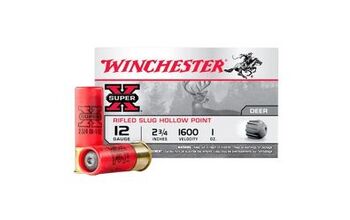
![[Partner 2025] Zastava Arms Showcases New Sniper Rifle In .338LM](https://cdn-fastly.thefirearmblog.com/media/2025/10/21/04211/post.jpg?size=350x220)






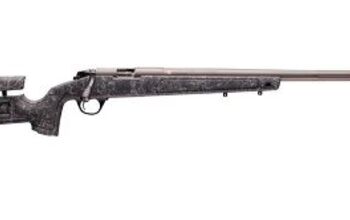
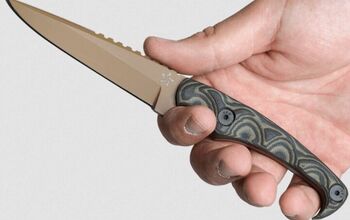
![The TANDEMKROSS ADX + Comet 1022 Charger [GunCon 2025]](https://cdn-fastly.thefirearmblog.com/media/2025/07/02/16202/post.jpg?size=350x220)
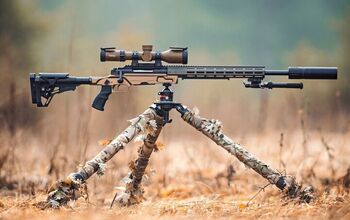



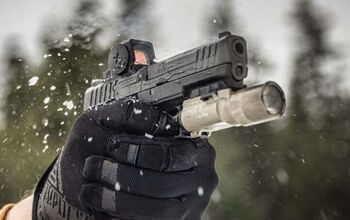


Comments
Join the conversation